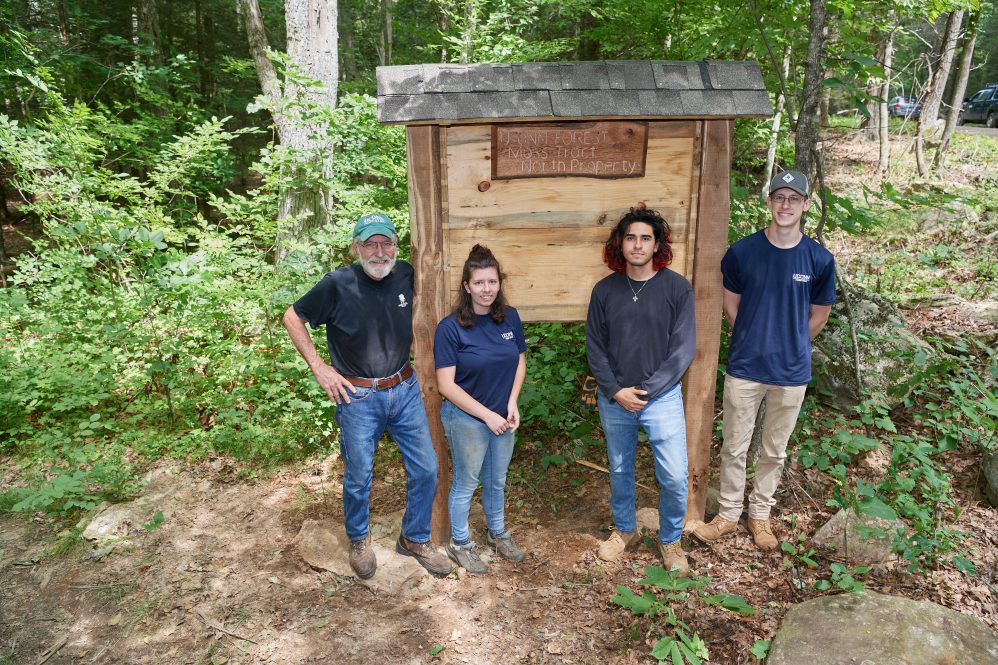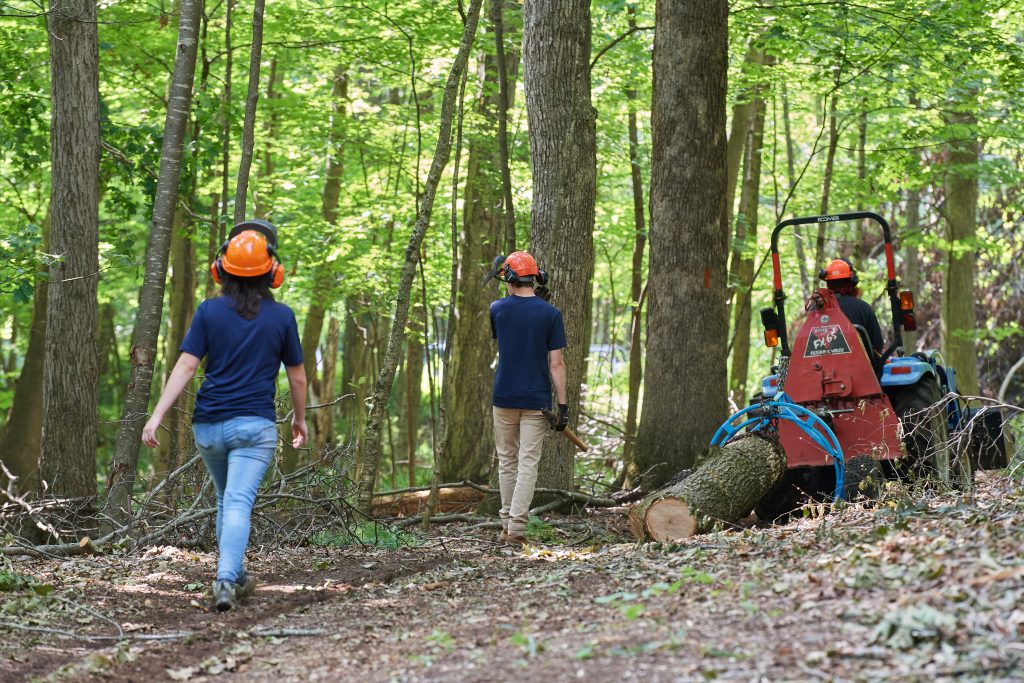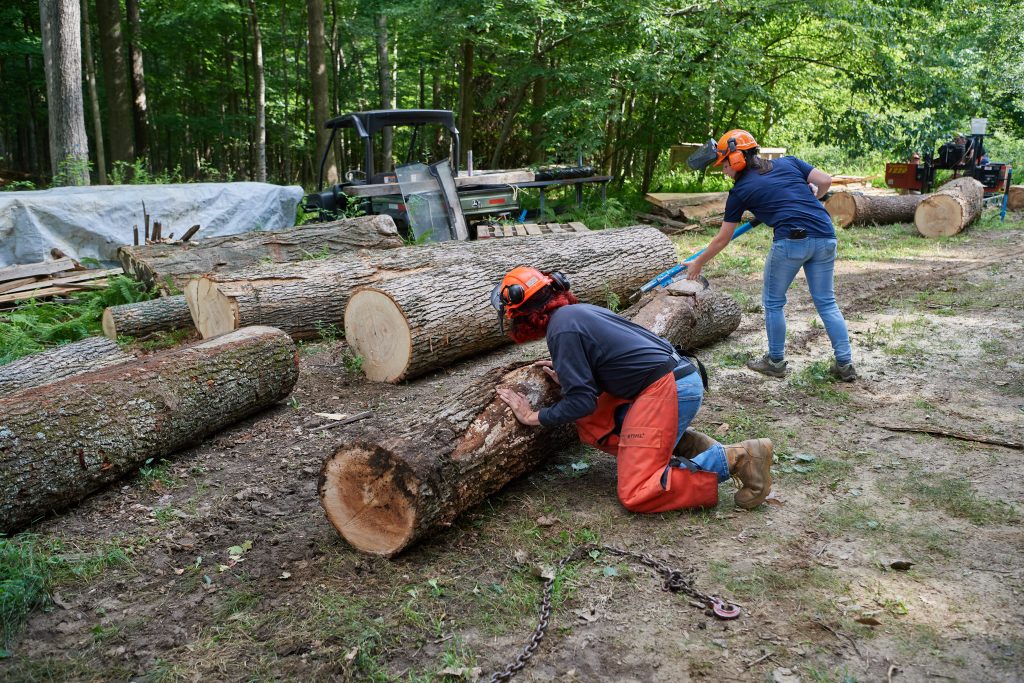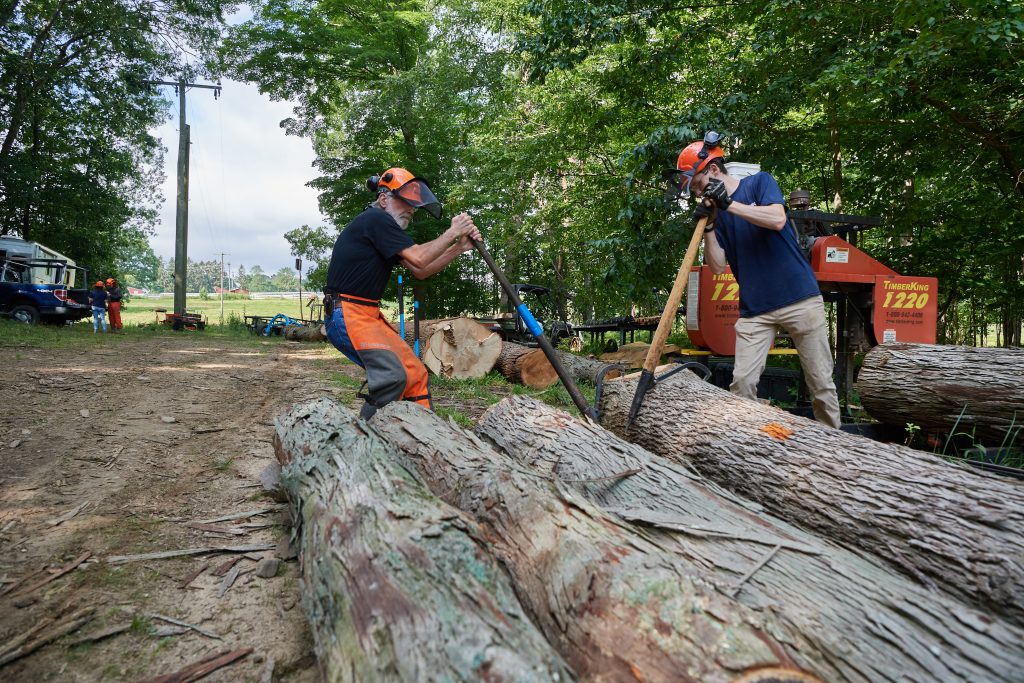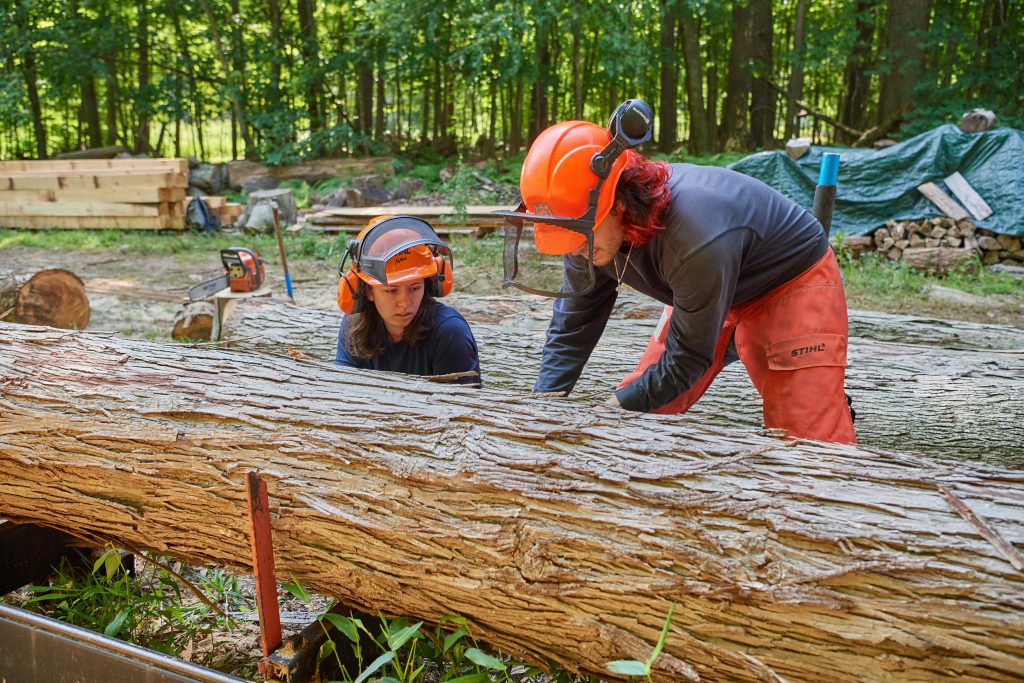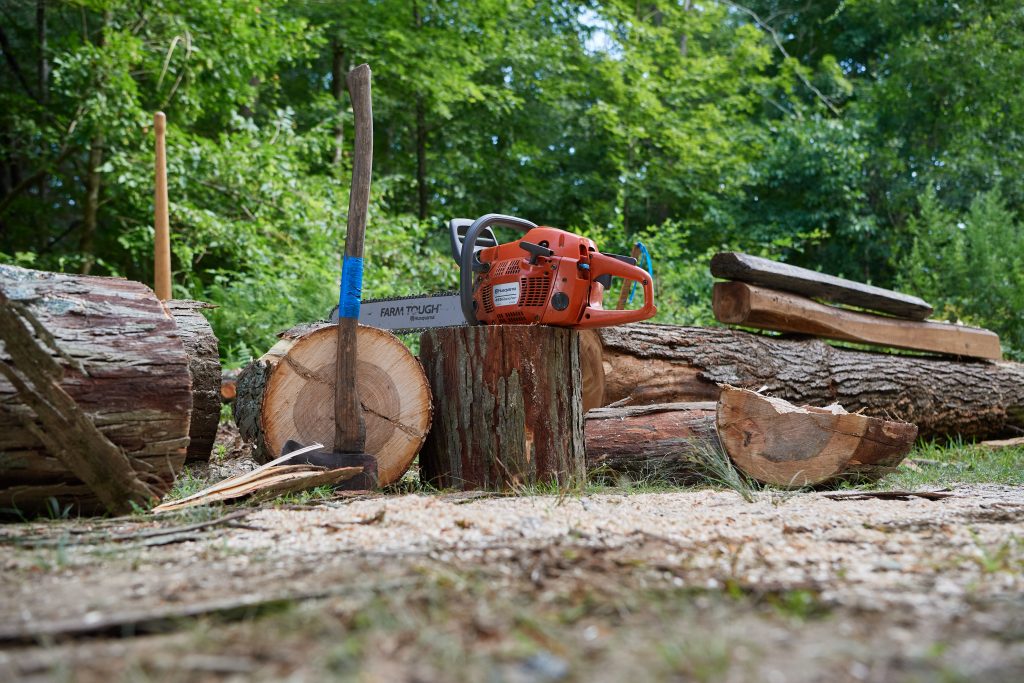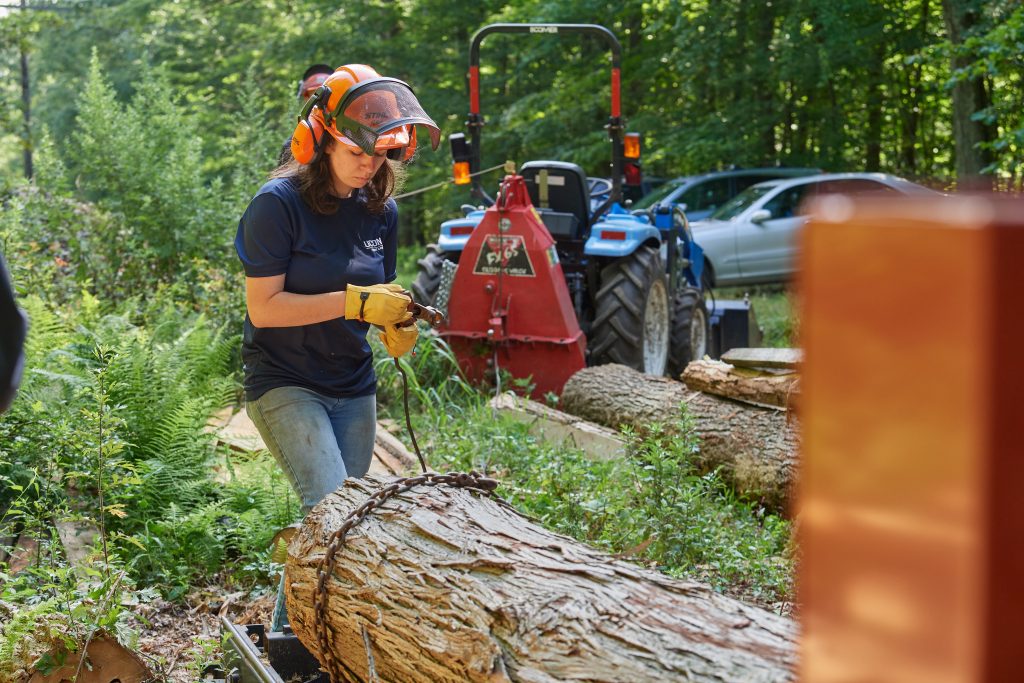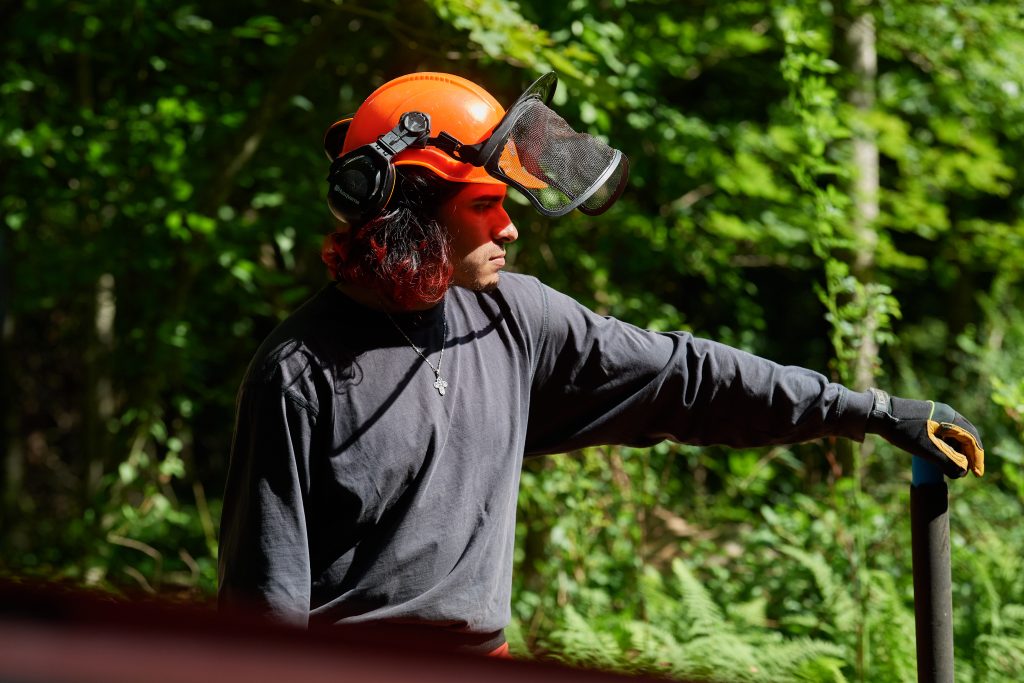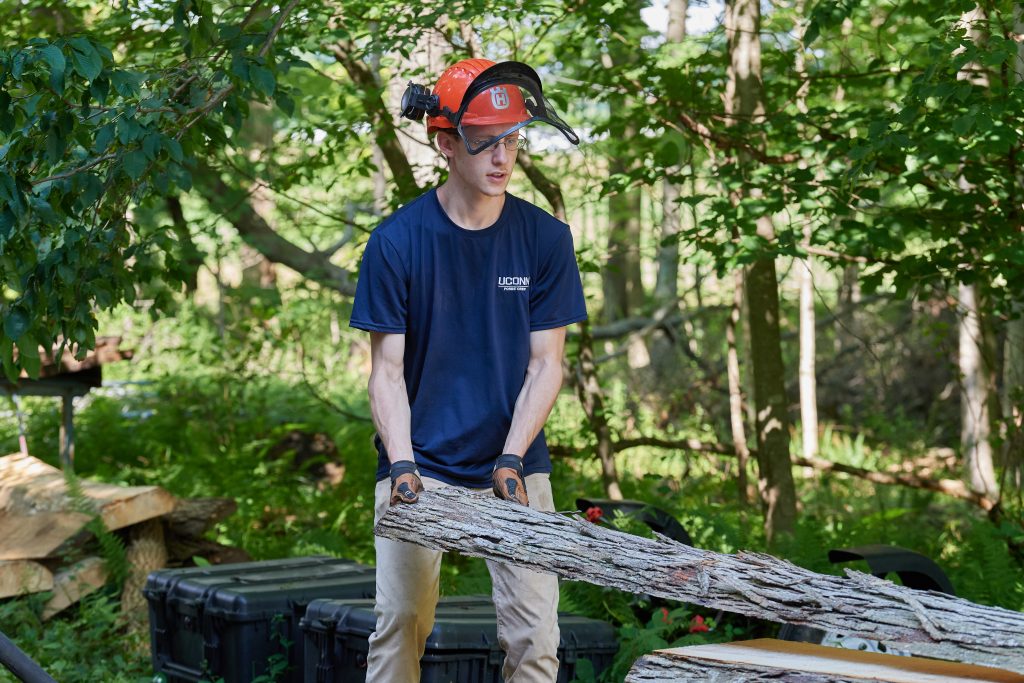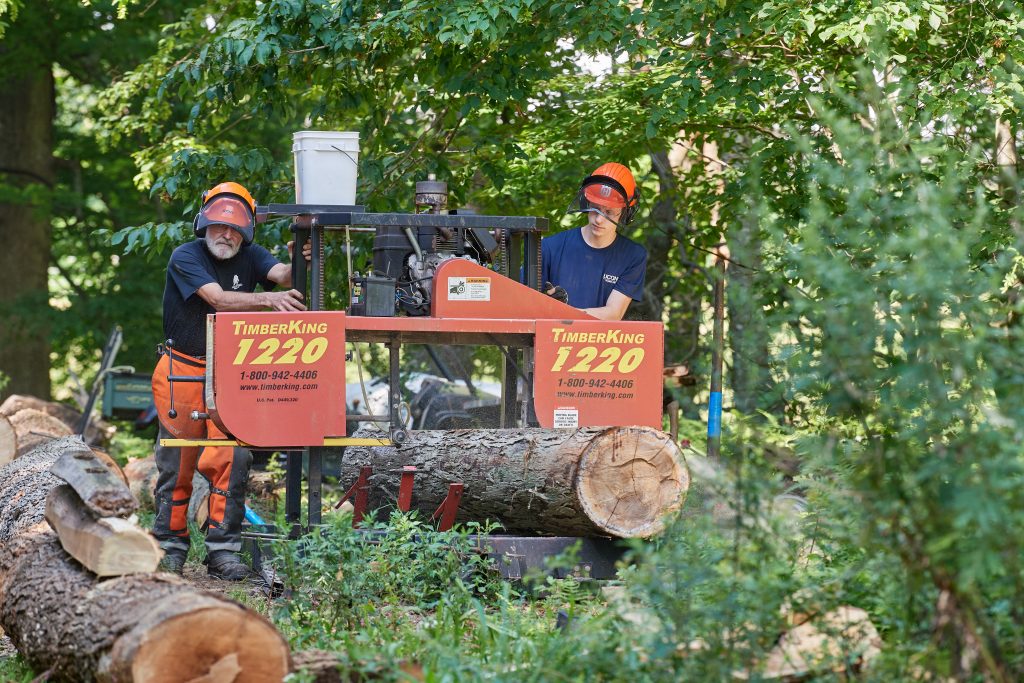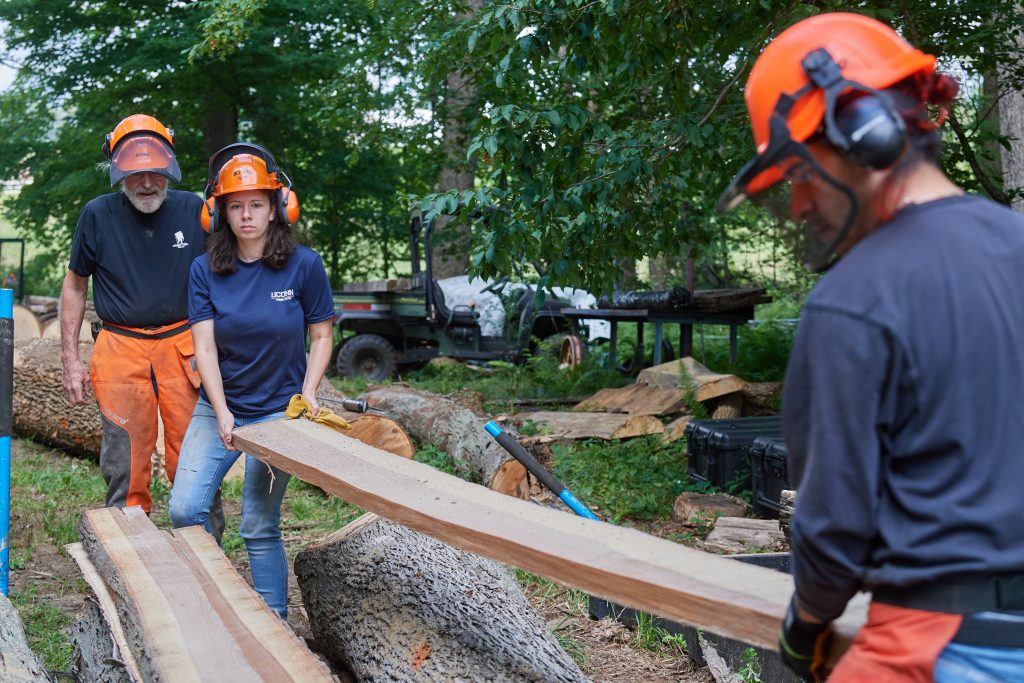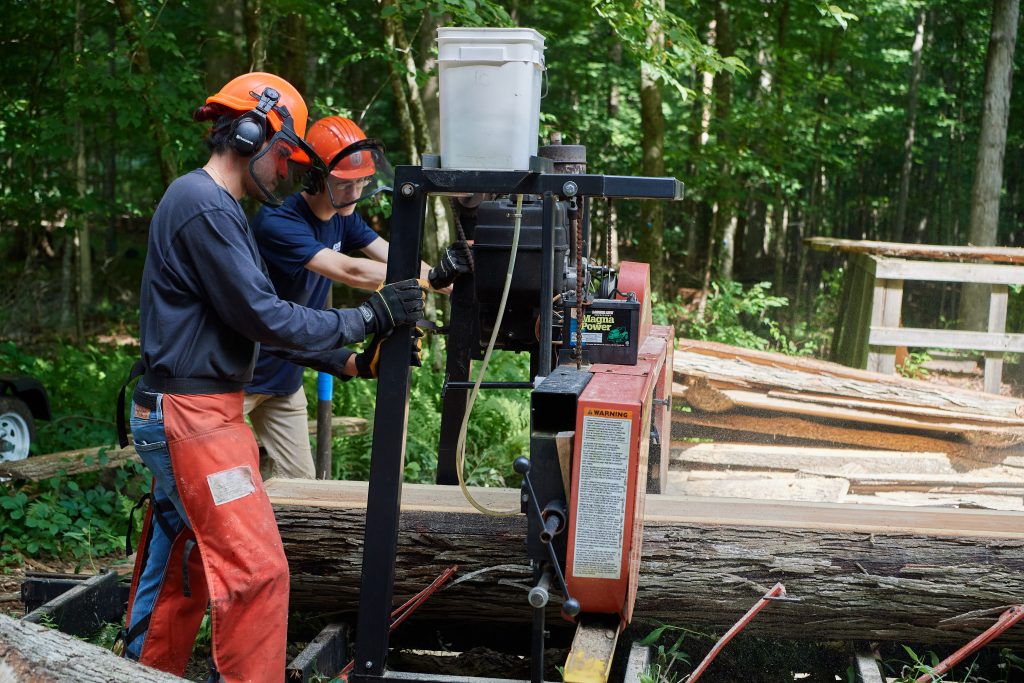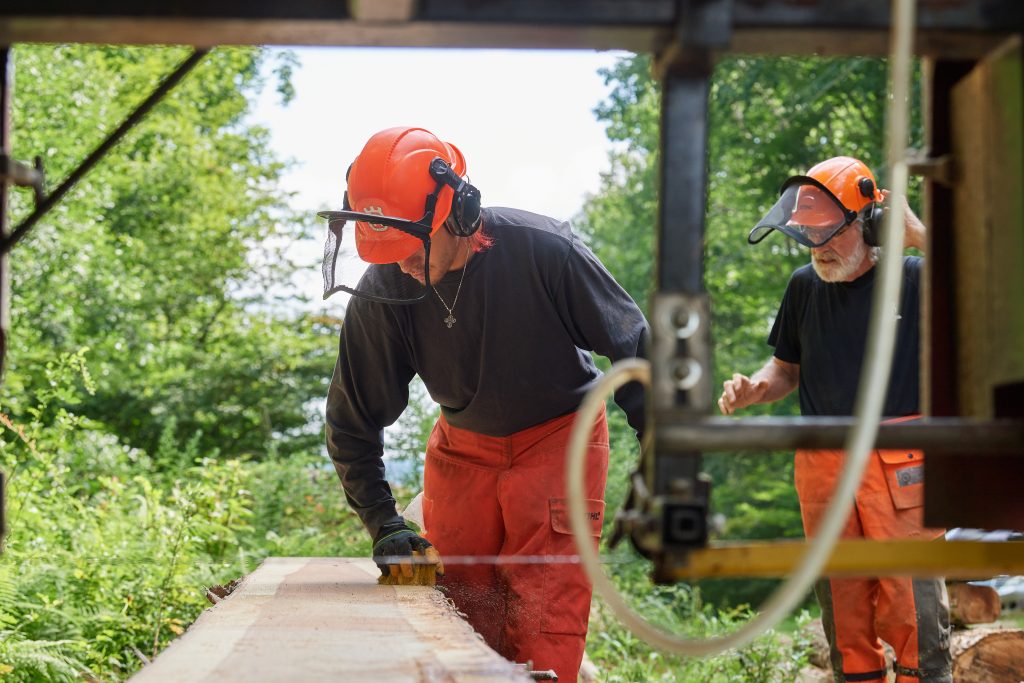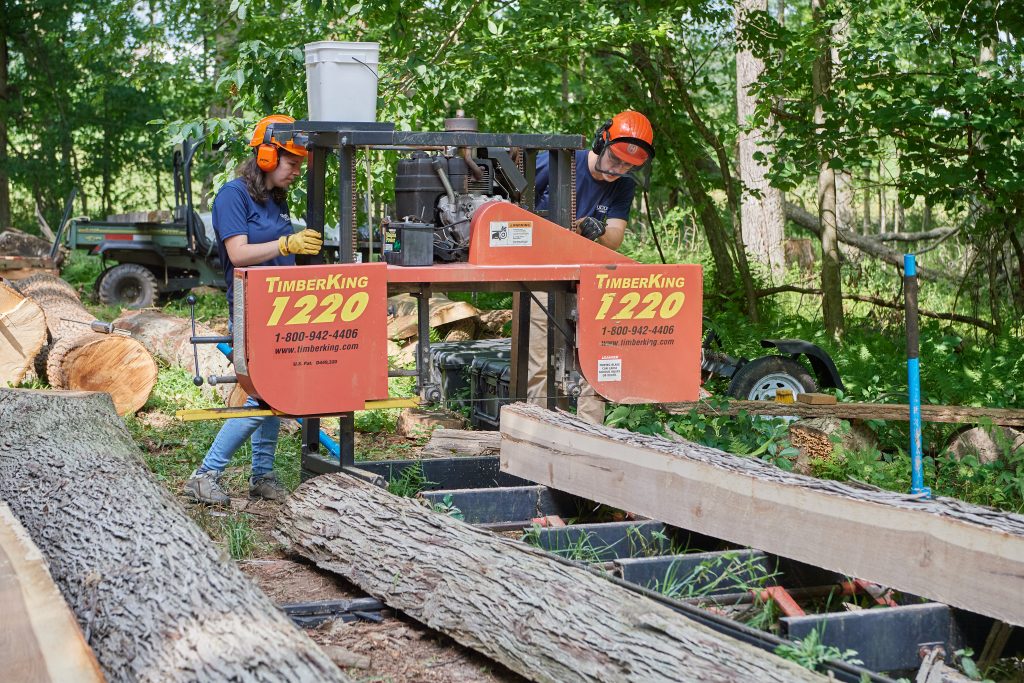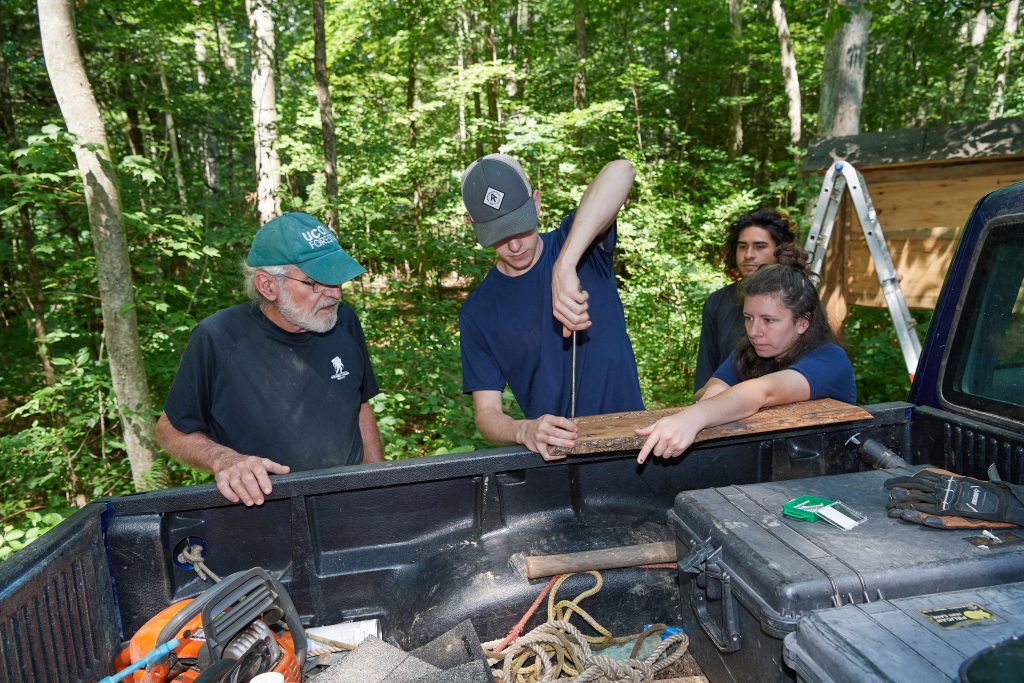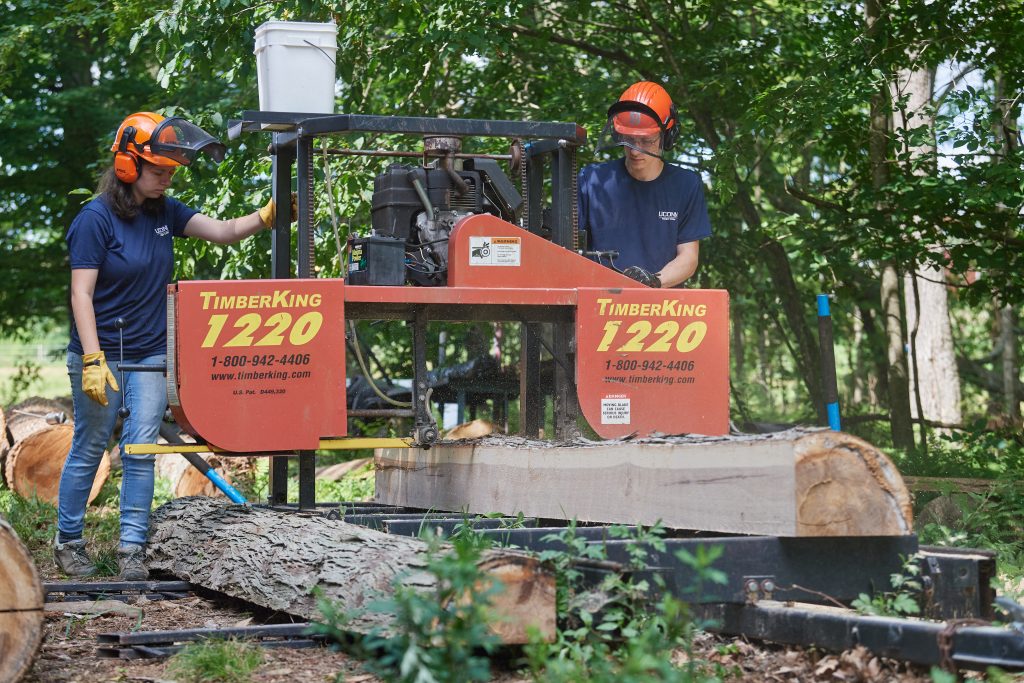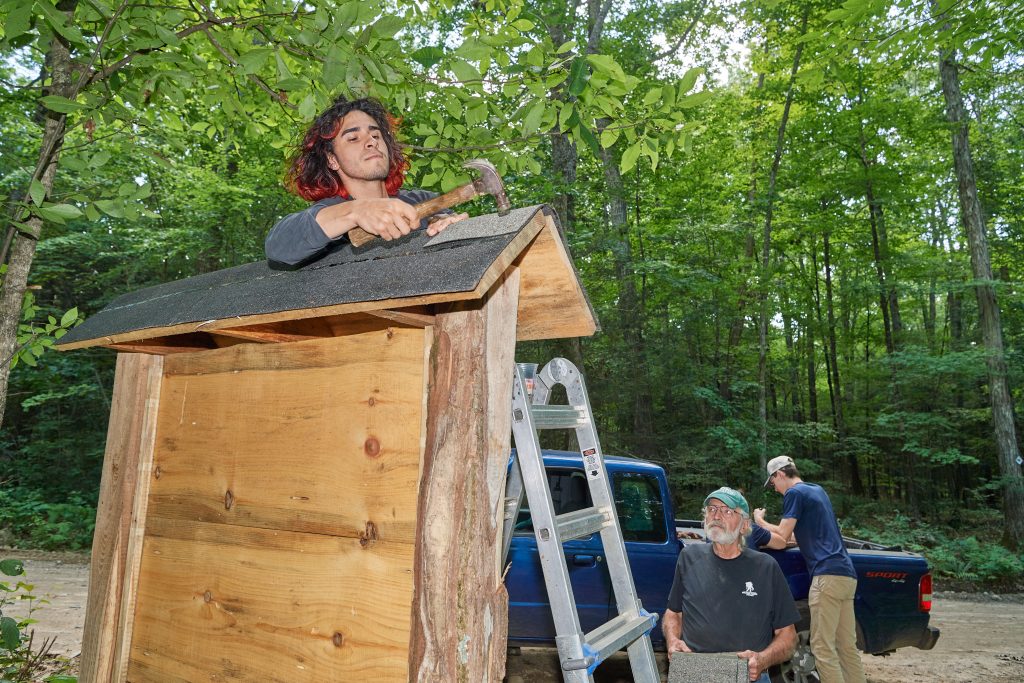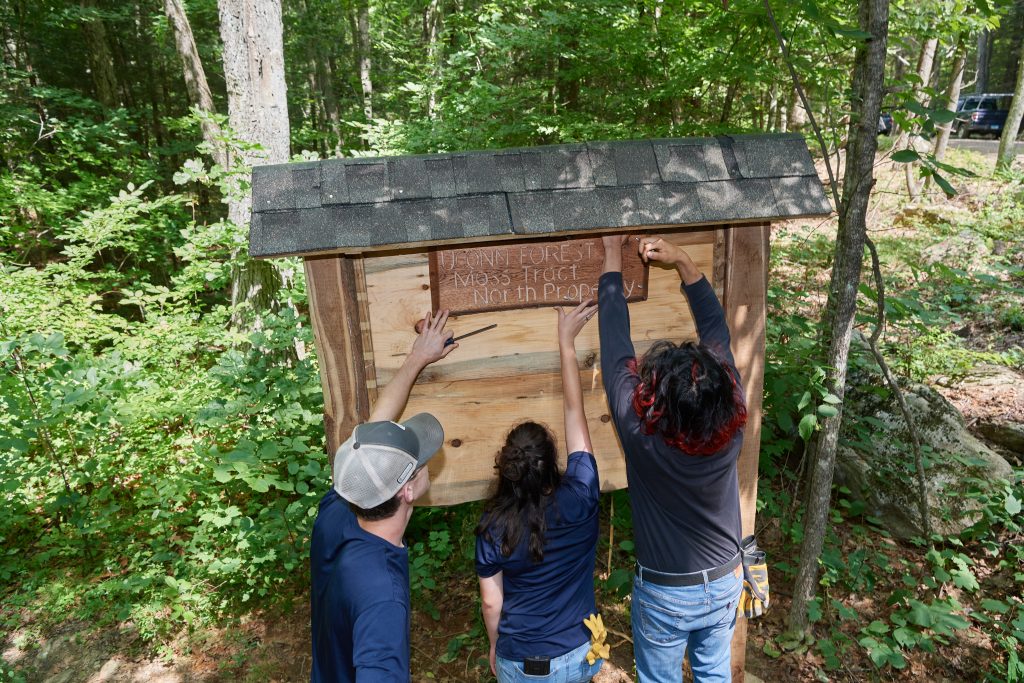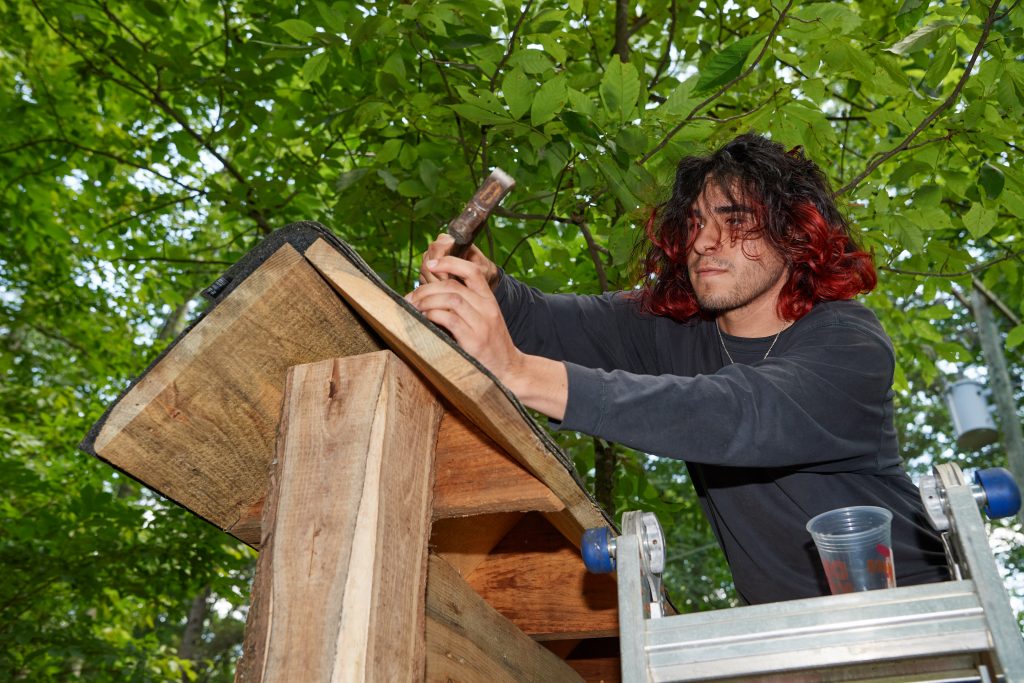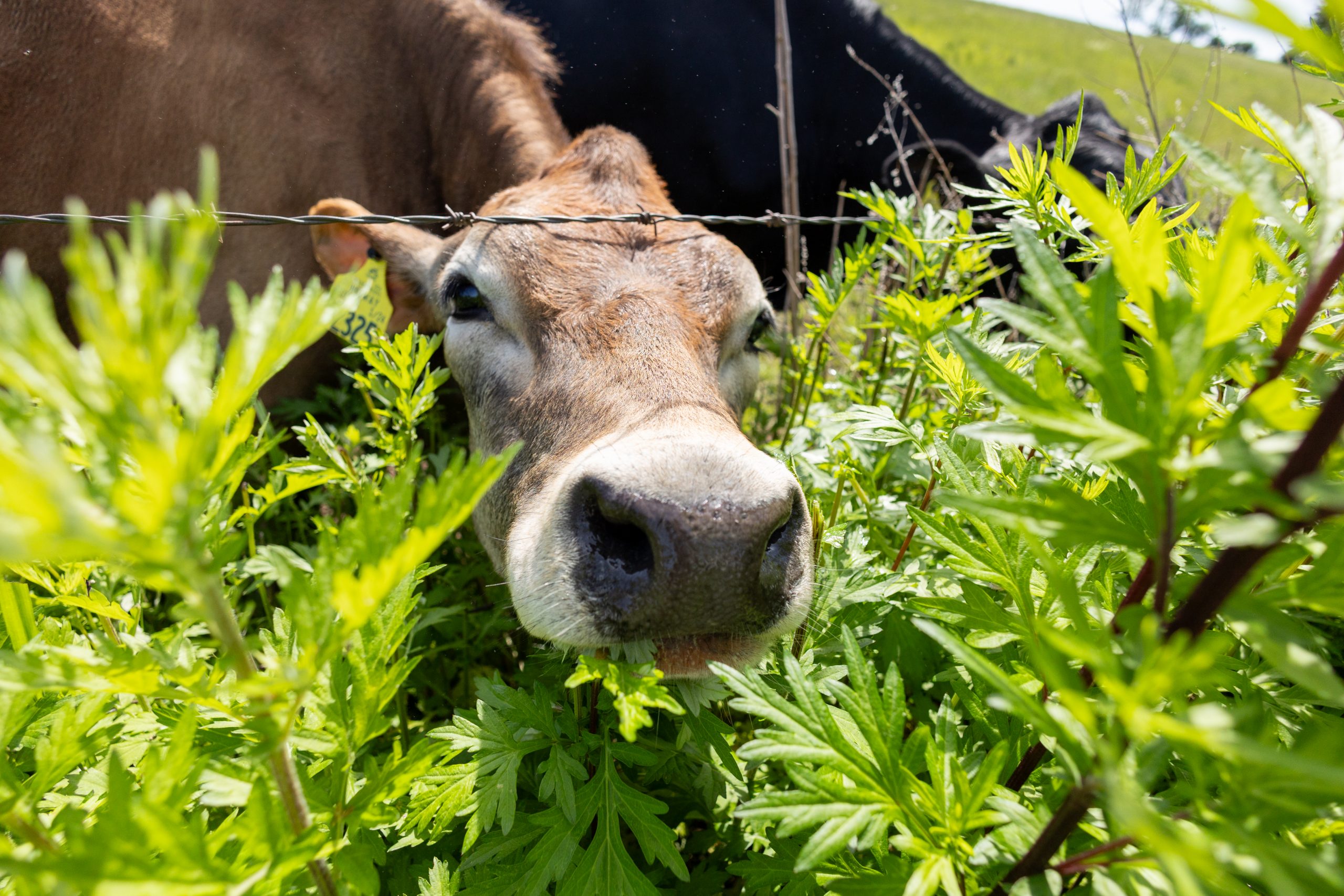The 2,100-acre UConn Forest surrounds the Storrs campus and includes parcels located in South Willington and Coventry. The forest is instrumental for teaching, research, and extension work done at UConn, as well as providing wildlife habitat, watershed protection and other environmental benefits. Many popular recreational hiking trails are located on UConn Forest. The Department of Natural Resources and the Environment (NRE) in the College of Agriculture, Health and Natural Resources manages the forest.
The UConn Forest is a considered a “working forest” in that proactive management is undertaken to sustain and enhance the many benefits the forest provides. Active management can sustain and perpetuate various tree and plant communities, enhance habitats and address forest health concerns. Conducting research on invasive insects, forest ecology, the dynamics of tree movement, water, and wildlife informs forest management decisions at state and regional levels.
Thomas Worthley is an Associate Extension Professor with a joint appointment with Extension and NRE. He uses the forest for his undergraduate and extension education activities and helps to facilitate research projects that take place on the forest. Worthley works with a crew of undergraduate students, the UConn Forest Crew, to attend to day-to-day management tasks.
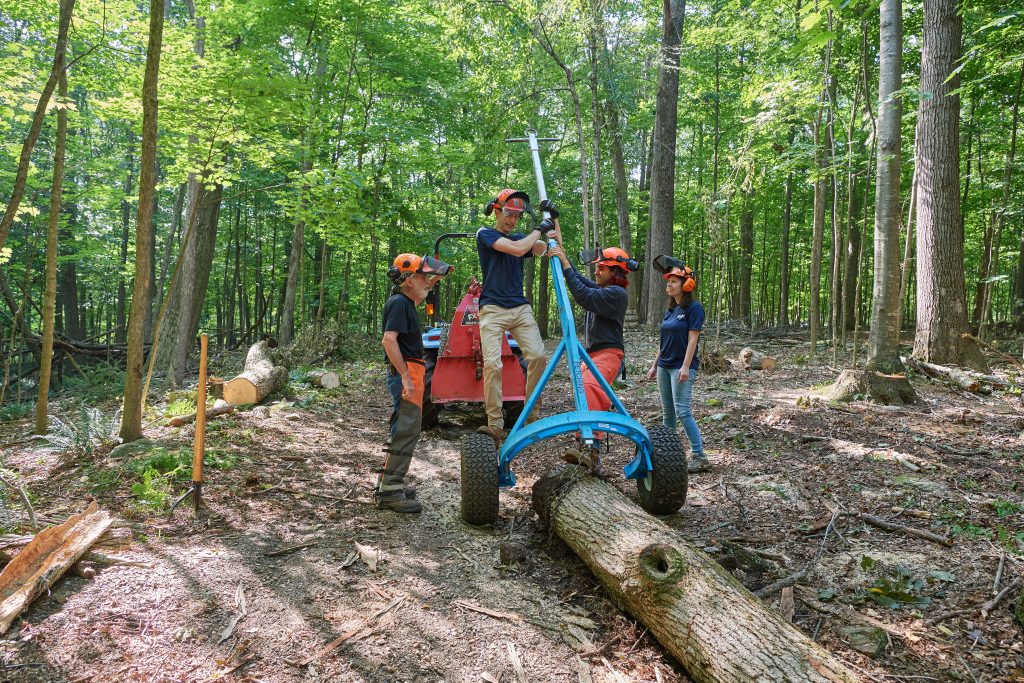
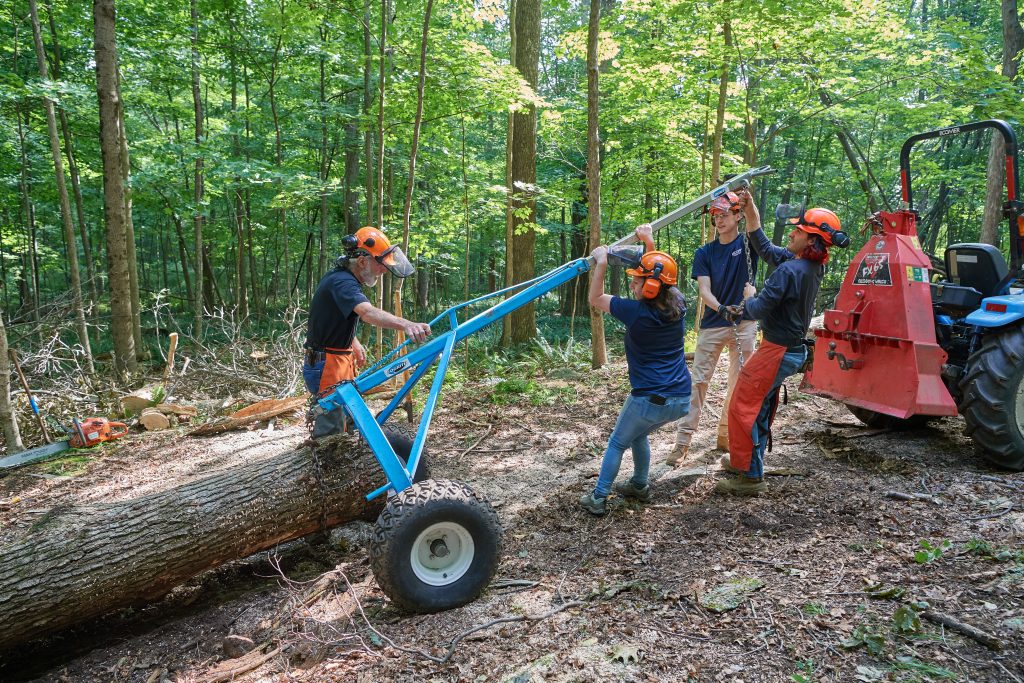
Recently the UConn Forest Crew could be found harvesting and removing several dead, wind-damaged and hazardous trees along one of the trails. Forest crew members are all professionally trained on chainsaw use and safety, as well as with other woods-work equipment. Felled trees were cut up, firewood stacked, and sizable logs, suitable for more durable wood products were drawn out of the woods. These logs were milled into boards on UConn Forest’s portable bandsaw mill.
Occasional wood product sales and small-scale lumber production in the UConn Forest provide funding for management initiatives. Furniture, educational toys, cutting boards, and picnic tables are a few of the many products made with UConn lumber. Utilizing wood for durable products from trees that are harvested or lost due to damage and disease are a way of storing a sizable portion of the carbon that has been sequestered in those trees.
Some of the wood from UConn Forest trees was used to produce the components and assemble new UConn Forest sign kiosks, as seen in these photos. These will become places for trail maps and other information for UConn Forest users. Locally grown, locally harvested, locally processed and assembled, and with care will last long enough for another tree to grow.
